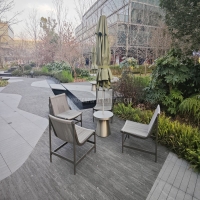Welcome to the website for landscape facilities products and knowledge.
What are the best materials for reducing the risk of cracking in cold weather?
Cold weather poses significant challenges for construction and maintenance, often leading to material cracking due to thermal contraction and moisture exposure. To mitigate these risks, selecting the right materials is crucial. Here are the top choices for reducing cracking in cold climates:
1. Fiber-Reinforced Concrete: Enhanced with fibers like steel or polypropylene, this concrete resists cracking by distributing stress more evenly and accommodating minor movements caused by temperature fluctuations.
2. Rubberized Asphalt: Ideal for pavements, rubberized asphalt remains flexible in low temperatures, reducing the likelihood of cracks from thermal contraction.
3. Expanded Polystyrene (EPS) Insulation: Used in walls and foundations, EPS provides excellent thermal resistance, minimizing temperature-induced stress on structures.
4. Vinyl Siding: A durable exterior option, vinyl siding expands and contracts with temperature changes without cracking, making it perfect for cold regions.
5. Engineered Wood: Unlike traditional lumber, engineered wood products are designed to withstand moisture and temperature variations, reducing warping and cracking.
By incorporating these materials, builders and homeowners can significantly lower the risk of cold-weather damage, ensuring longevity and structural integrity. Always consult with professionals to choose the best option for your specific climate and project needs.
Related search:

Recommendation
Metal structure rattan chair without armrests for single person, with woven seat and backrest.